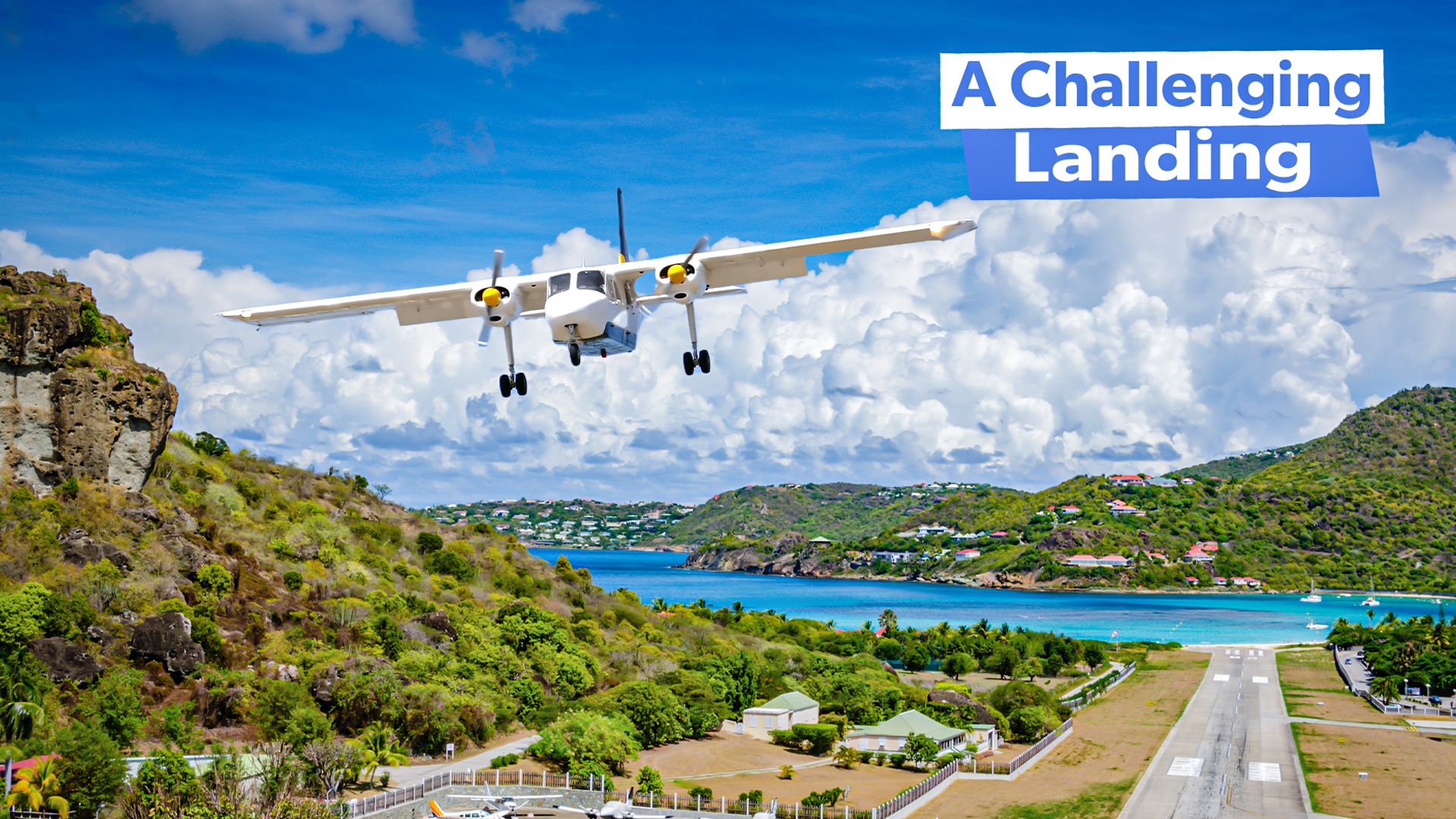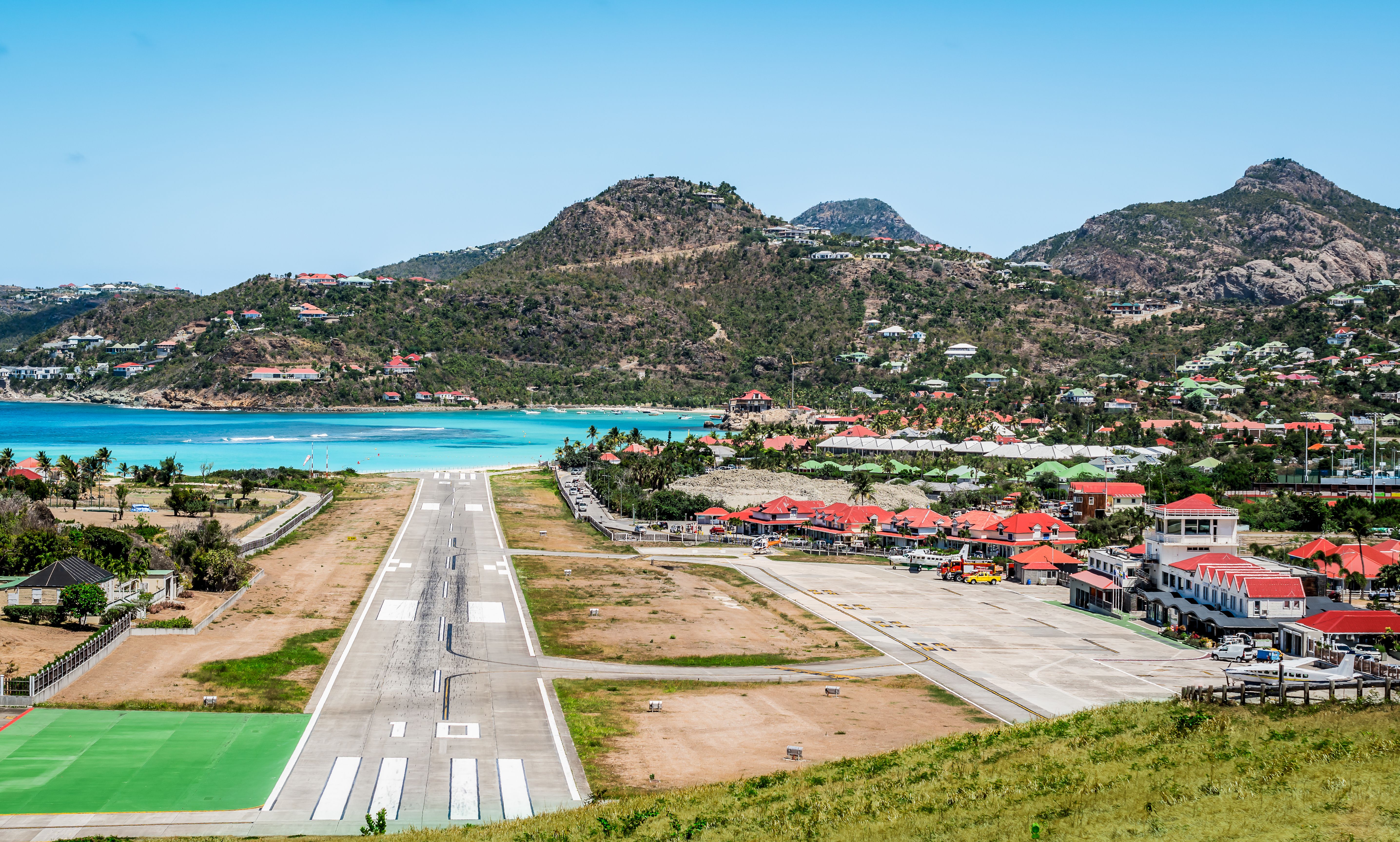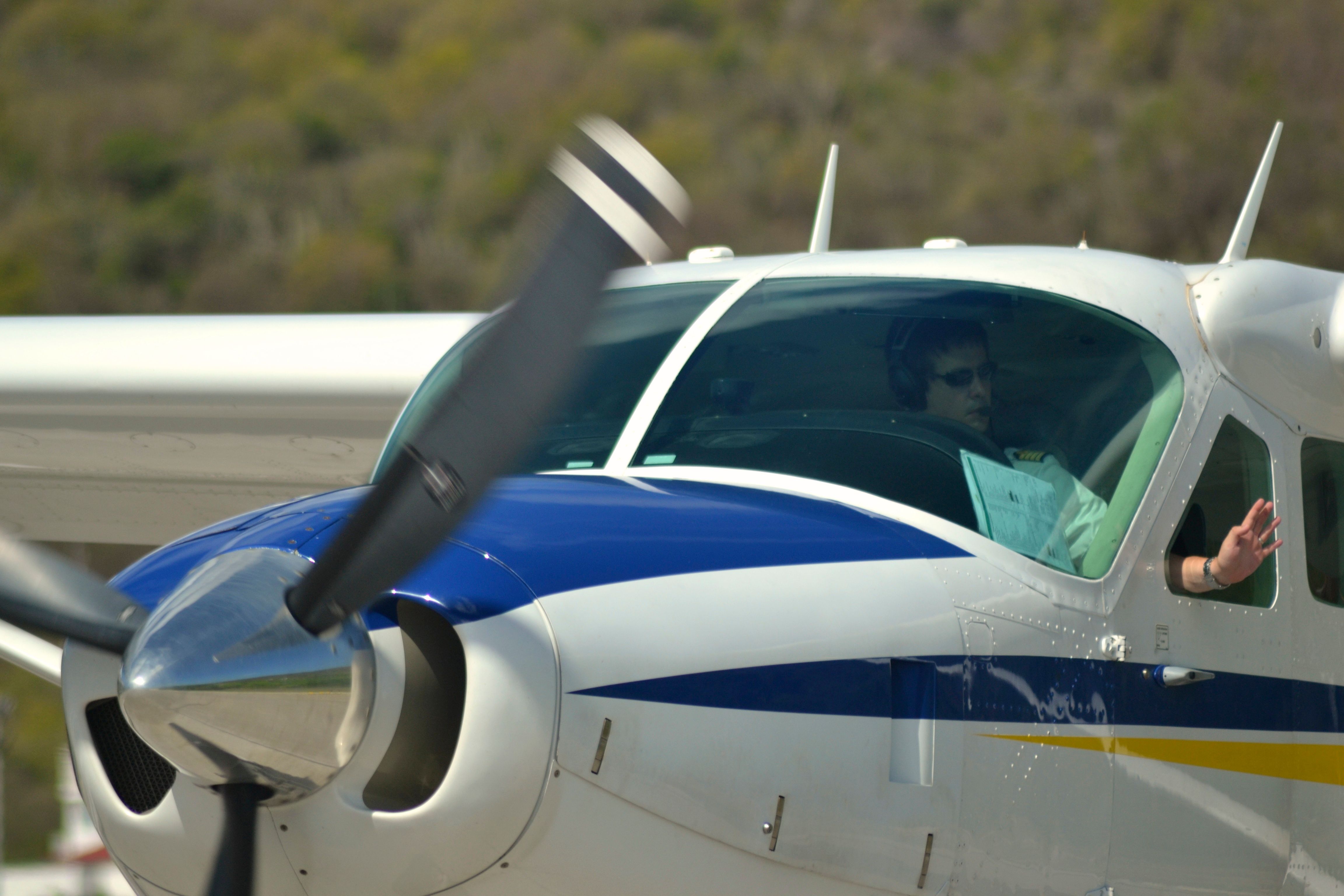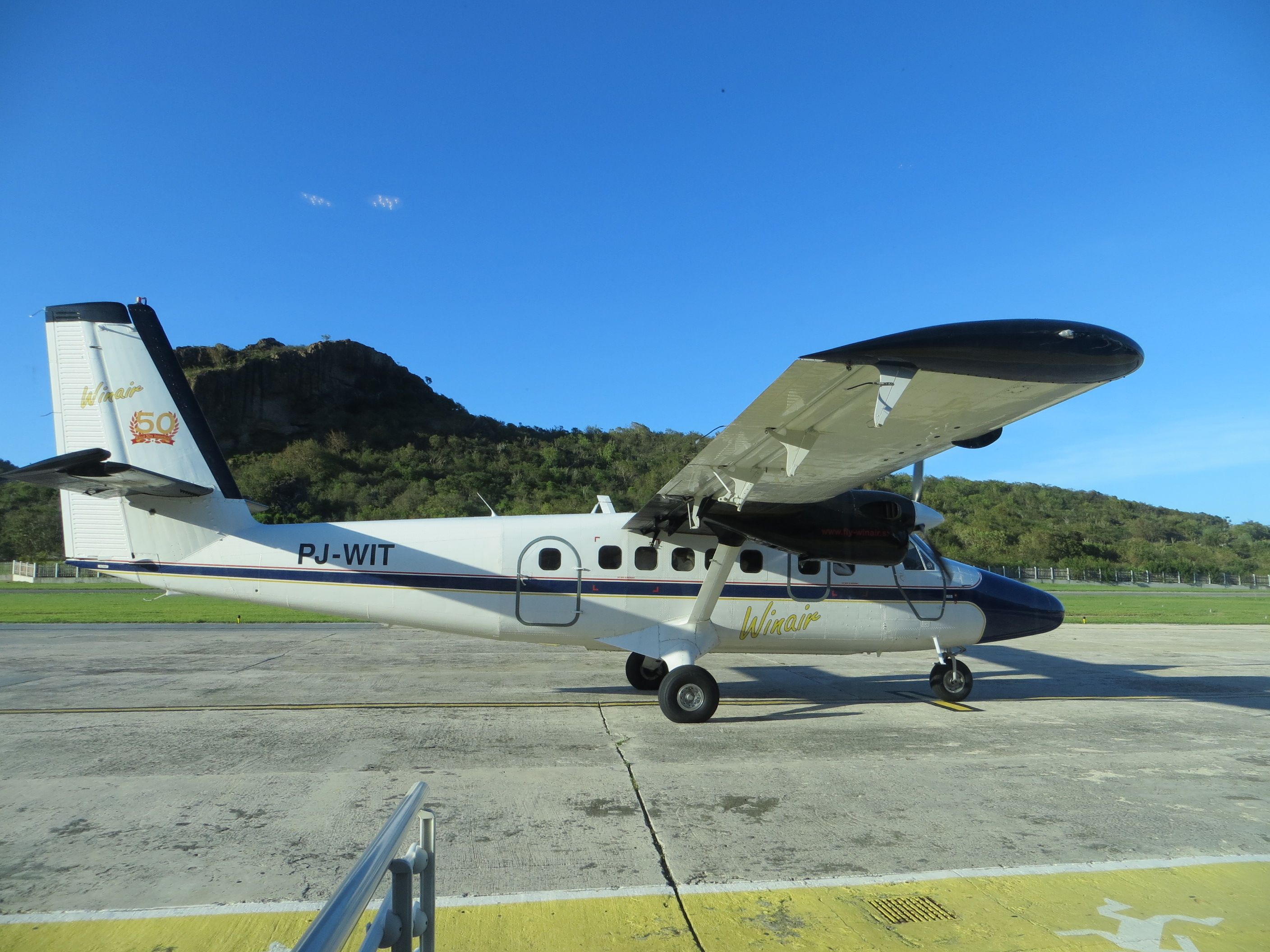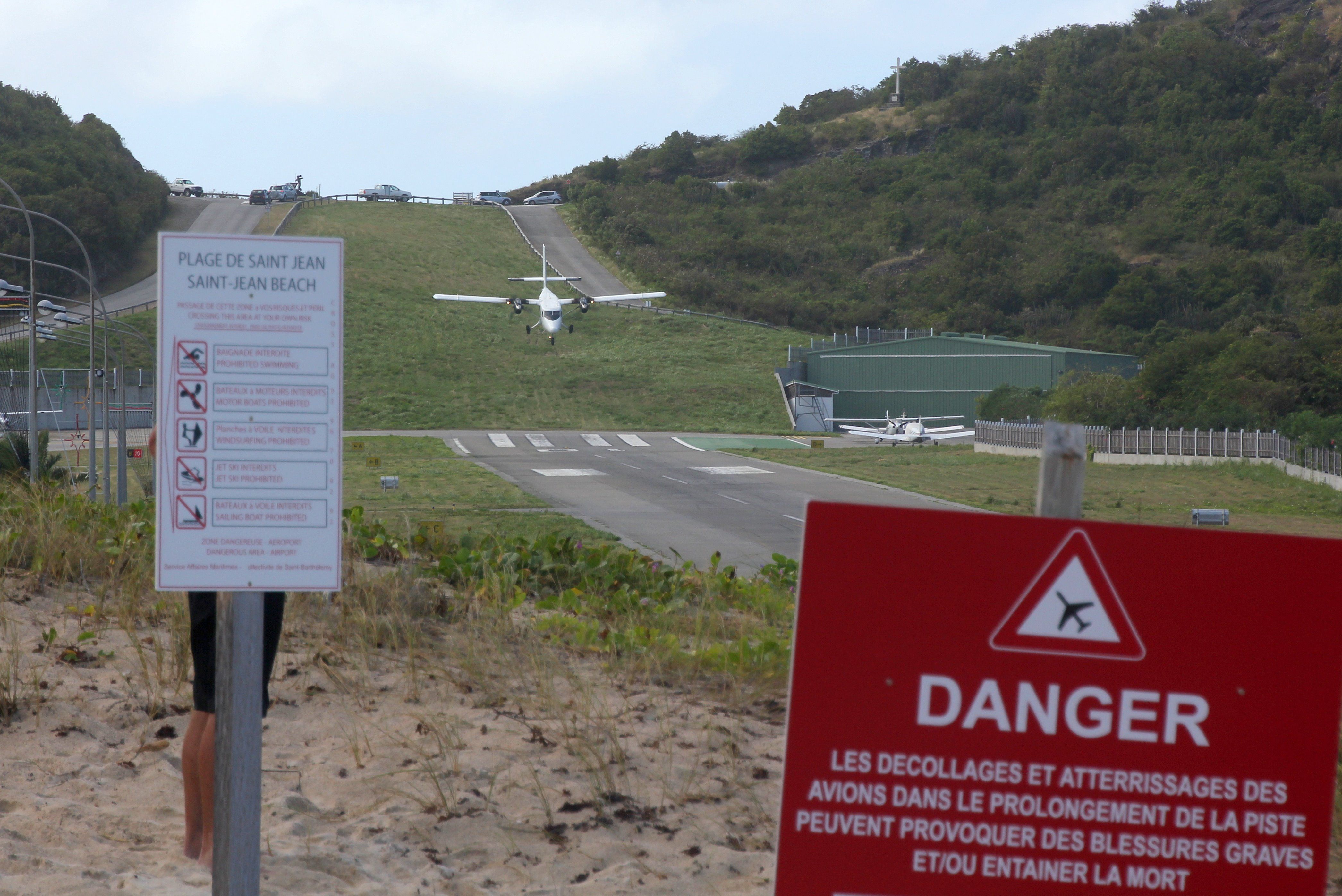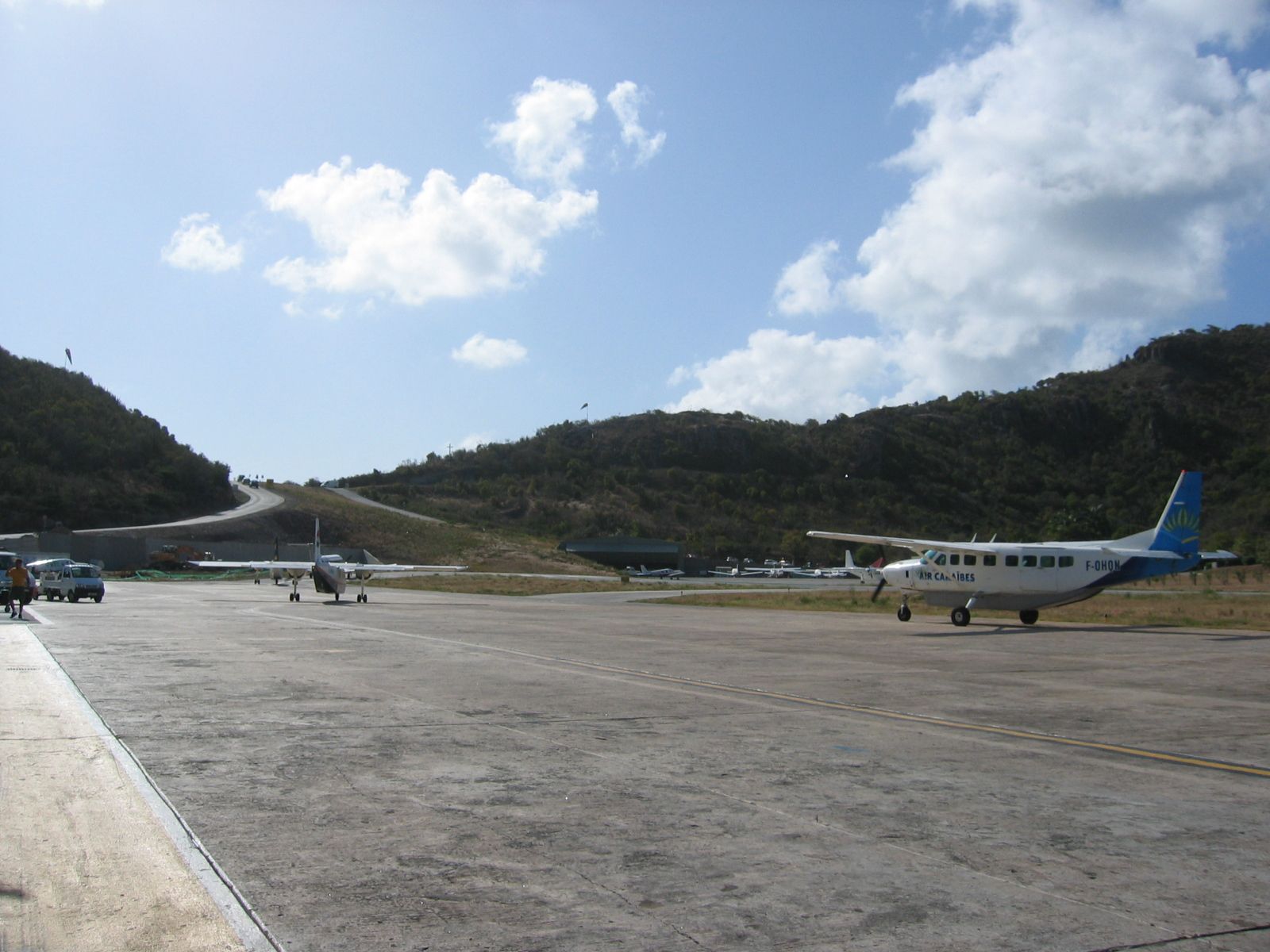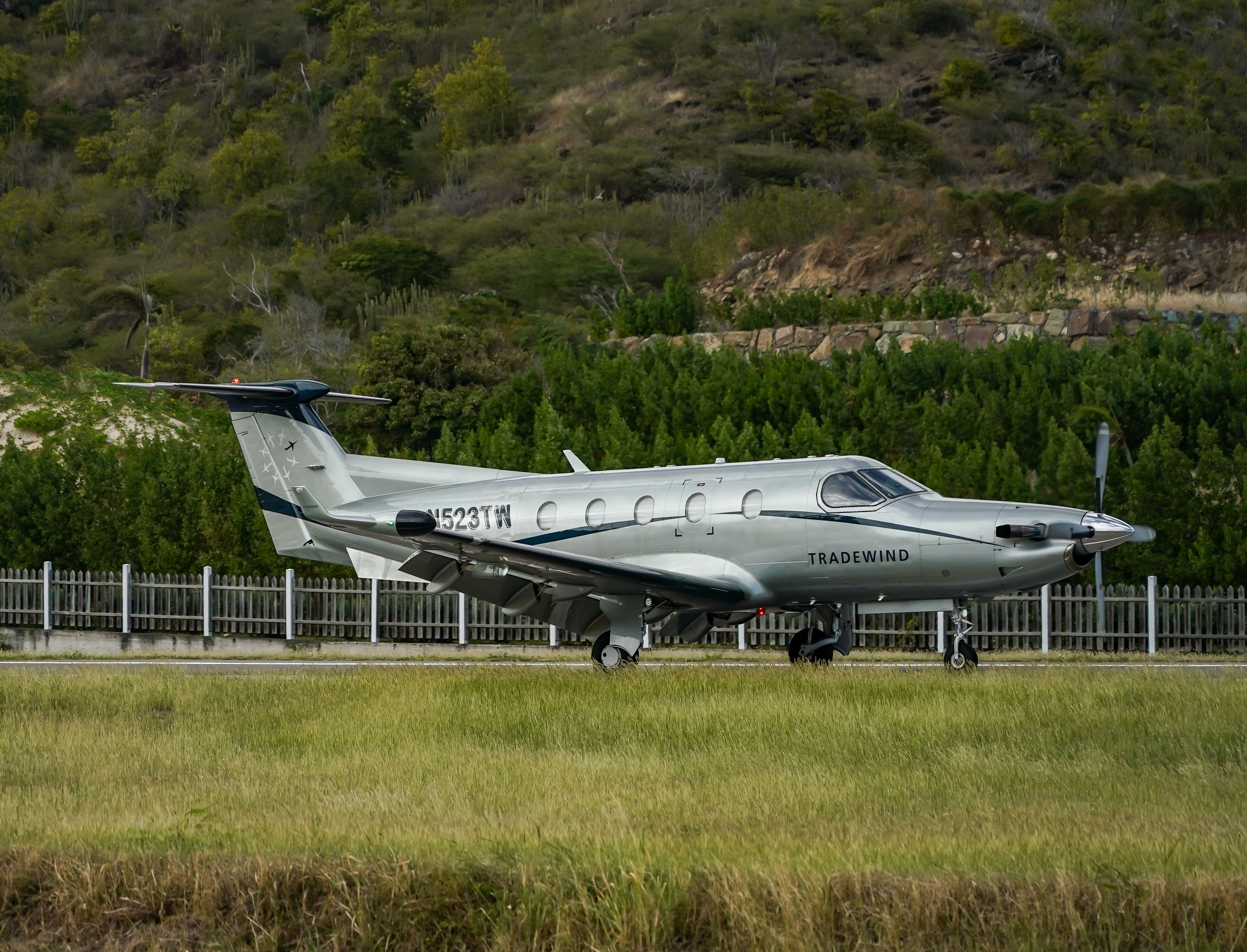Nestled in the heart of the Caribbean, commonly known as St. Barts is renowned for its luxurious lifestyle, pristine beaches, and vibrant culture. However, one of its most notable features is the Gustaf III Airport (SBH), which is known to be one of the most challenging airports in the world.
Photo: Nancy Pauwels | Shutterstock
For aviation enthusiasts, pilots, and thrill-seekers alike, the airport offers a unique experience that blends breathtaking beauty with adrenaline-pumping danger. Here are five fun facts that make this Caribbean airport extraordinary and challenging.
1
A short and sloped runway
Only 640 meteres long (2,100 feet)
One of the most distinctive characteristics of Gustaf III Airport is its short runway, measuring only 2,100 feet (640 meters) in length. This is significantly shorter than the runways at most commercial airports, which typically range from 8,000 to 12,000 feet.
The runway’s length limits the aircraft that can safely land and take off, making it suitable only for small STOL (short takeoff and landing) aircraft. According to James Henderson, the airport is ranked as the third most dangerous globally due to its short runway, steep hill on the final approach, and the need for precision.
Adding to the complexity is the runway’s slope. The runway is slightly inclined, with a downward slope toward the beach. This means that pilots must not only contend with a short landing distance but also manage their descent rate carefully.
A steep approach is necessary to touch down precisely at the beginning of the runway. Even a slight miscalculation can result in a dangerous overshoot into the Caribbean Sea. The airport’s geography requires pilots to have a special endorsement to land here, underscoring the difficulty and unique skill set needed to navigate this airport.
Here is a timetable of airlines flying to Saint Barthélemy’s Gustaf III Airport (SBH):
|
Airline |
Origin Airport |
Frequency |
Aircraft Type |
|---|---|---|---|
|
St Barth Commuter |
Sint Maarten (SXM) |
Multiple daily flights |
Cessna 208B Grand Caravan |
|
St Barth Commuter |
Saint Martin Grand Case (SFG) |
Multiple daily flights |
Cessna 208B Grand Caravan |
|
St Barth Commuter |
Guadeloupe (PTP) |
Multiple weekly flights |
Cessna 208B Grand Caravan |
|
Winair |
Sint Maarten (SXM) |
Daily flights |
de Havilland DHC-6 Twin Otter |
|
Tradewind Aviation |
San Juan, Puerto Rico (SJU) |
Multiple weekly flights |
Pilatus PC-12 |
|
Air Caraibes |
Sint Maarten (SXM) |
Daily flights |
de Havilland DHC-6 Twin Otter |
|
Air Caraibes |
Guadeloupe (PTP) |
Multiple weekly flights |
de Havilland DHC-6 Twin Otter |
2
Stringent pilot requirements
Pilots must undergo specific training.
Landing at Gustaf III Airport is not for the faint-hearted. Due to the demanding approach and landing, pilots must undergo specific training and receive special certification to operate flights in and out of SBH.
According to Key Aero, the airport’s unique geography and short runway make it imperative for pilots to demonstrate proficiency in handling these challenging conditions. They must complete several supervised takeoffs and landings under a certified instructor with extensive experience flying into SBH.
This rigorous process is essential for ensuring safety, as even seasoned pilots find the airport challenging. The certification is a formality and a crucial step in preventing accidents. Many pilots describe the experience of landing at SBH as one of the most technically demanding in their careers. The combination of a short runway, nearby hills, and frequent crosswinds tests even the most experienced aviators.
3
A scenic yet hazardous approach
A narrow valley and a hill stand in the way!
The approach to Gustaf III Airport is as beautiful as it is perilous. Pilots must navigate through a narrow valley and descend over a hill just before aligning with the runway. The approach path takes aircraft over a minor traffic roundabout and then requires a rapid descent to the runway.
As the aircraft comes in for landing, it flies very close to a hill that obstructs the direct line of sight to the runway. This creates an illusion that can be disorienting, even for experienced pilots.
The scenic approach, with its panoramic views of the turquoise waters and lush green hills, is a favorite among passengers. However, it demands the utmost concentration and precision from the pilots. According to One Mile At A Time, the pilots must carefully judge their altitude and speed as they clear the hill and align with the short runway. The approach is so iconic that it attracts aviation enthusiasts who gather at strategic points around the airport to watch planes land.
Here are five of the world’s most challenging airports with unique approaches and short runways:
|
Airport Name |
Location |
Runway Length |
Key Challenge |
|---|---|---|---|
|
Lukla Airport (Tenzing-Hillary) |
Nepal |
1,729 feet (528 m) |
High altitude, steep gradient, and surrounded by mountains |
|
Courchevel Altiport |
France |
1,762 feet (537 m) |
Sloped runway, no go-around procedure, mountainous terrain |
|
Princess Juliana International |
Saint Martin |
7,152 feet (2,180 m) |
Low-altitude beach approach over Maho Beach |
|
Paro Airport |
Bhutan |
6,445 feet (1,964 m) |
Surrounded by high mountains, only daytime operations |
|
Juancho E. Yrausquin Airport |
Saba, Dutch Caribbean |
1,300 feet (396 m) |
Shortest commercial runway, cliffs on both sides |
4
Proximity to St. Jean beach
In proximity of a popular beach.
One of the most fascinating aspects of the airport is its proximity to St. Jean Beach, one of the most popular beaches on the island. The runway ends just a few meters from the beach, and as planes land, they fly over sunbathers at a very low altitude.
The sight of an aircraft gliding in over the heads of beachgoers is a dramatic spectacle unique to St. Barts. This proximity offers a thrilling experience for both passengers and onlookers.
According to Wimco Villas, the departure is equally breathtaking. Aircraft must ascend quickly to avoid the surrounding terrain, making for an exhilarating takeoff that again passes over the heads of those on the beach. This proximity to one of the island’s main tourist spots underscores the airport’s integration into the local environment, providing a unique blend of relaxation and excitement.
5
Limited aircraft size and operations
The Havilland Dash 7 is the largest aircraft that can land here.
Due to its runway length and the nature of the approach, only small aircraft are permitted to operate at Gustaf III Airport. The largest aircraft that can land here is the de Havilland Dash 7, which has a capacity of up to 48 passengers.
Most flights are operated by smaller planes, such as the Pilatus PC-12, Cessna 208B Grand Caravan, and the Britten-Norman BN-2 Islander. These aircraft are particularly well-suited to the short runway and steep approach required at SBH.
Photo: Leonard Zhukovsky | Shutterstock
The limited size of aircraft directly impacts tourism and transportation logistics. According to St. Barths, most visitors arrive via connecting flights from nearby islands like St. Martin or private charter flights. This restriction adds to the exclusivity and allure of the island, as getting there is an adventure in itself. The experience of landing at SBH is often seen as a rite of passage for both pilots and travelers.
Aircraft that are most commonly found at SBH:
De Havilland Dash 7
- Capacity: Up to 48 passengers
- Used occasionally, the largest aircraft that can safely land at SBH.
Pilatus PC-12
- Capacity: 6-9 passengers
- Popular for private charters and regional flights due to its short takeoff and landing capabilities.
Cessna 208B Grand Caravan
- Capacity: 9-14 passengers
- Commonly used for regional commuter flights.
de Havilland DHC-6 Twin Otter
- Capacity: 19 passengers
- Frequently used for short inter-island routes.
Britten-Norman BN-2 Islander
- Capacity: 9 passengers
- Utilized for very short flights between nearby islands and low-volume routes.

